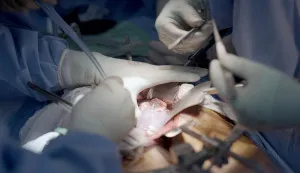The James Webb Space Telescope Celebrated Its First Year Of Cosmic Wonder With An Image Of Starbirth
Time to Read: 3 minute
The James Webb Space Telescope shared a stunning new image of starbirth to celebrate its first anniversary of stunning discoveries
The James Webb Space Telescope has celebrated its first year with one of those images of its cosmic exploration that we may have grown accustomed to seeing by now, but when we get closer to this one, it especially shows in detail how stars similar to the one we are seeing are born. in the center of our solar system, with a new incomparable image.
The photo pans across a portion of the Rho Ophiuchi cloud complex, the closest star-forming region to Earth. The images were taken and edited to celebrate the first anniversary of the start of science operations for NASA's James Webb Space Telescope. Credits go to NASA, ESA, CSA, Greg Bacon (STScI).
The Rho Ophiuchi cloud complex is the closest star-forming region to Earth.
It is a relatively small stellar nursery and quiet, but you'd never know that by just looking at the chaotic close-up of the Webb image.
Jet erupting from young stars crisscross the image, impact surrounding interstellar gas, and illuminate molecular hydrogen, shown in red. Some stars display the telltale shadow of a circumstellar disk, the components of future planetary systems.
The young stars at the center of many of these disks are similar in mass to the Sun or smaller.
The heaviest in this image is the star S1, which appears in the middle of a glowing cave that it is gouging with its stellar winds in the bottom half of the image.
This is the only star in the image that is significantly more massive than the Sun.
One whole year across the whole sky
From its First Deep Field Image , Unveiled by US President Joe Biden, Vice President Kamala Harris and Nelson live from the White House, Webb has made good on his promise to show us more of the universe than ever before. However, Webb has revealed much more than distant galaxies in the early universe.
“The breadth of scientific explorations it is capable of Webb becomes really clear now, when we have a full year of data from all-sky targets,” said Eric Smith, associate director for research in the Division of Astrophysics at NASA Headquarters and a Webb program scientist.
What the James Webb Space Observatory's first year has been like
The observatory is launched in Christmas 2021, and scientists spent the next six months preparing the telescope for action: deploying its sunshield and honeycomb array of golden mirrors, then testing the four instruments used to observe the cosmos.
When it was ready, the Webb embarked on his journey to peer into the depths of the universe.
Beyond the impressive infrared images, what has really excited scientists are the sharp Webb spectra: the detailed information that can be gleaned from light using the spectroscopic instruments on this telescope.
Webb is helping to develop clues about our own origins: how Earth became the ideal place for life as we know it.
The James Webb Space Telescope is the world's premier space science observatory and is an international program run by NASA with its partners: ESA (European Space Agency) and the Canadian Space Agency (CSA).



